Smart Fishing at FishSensor
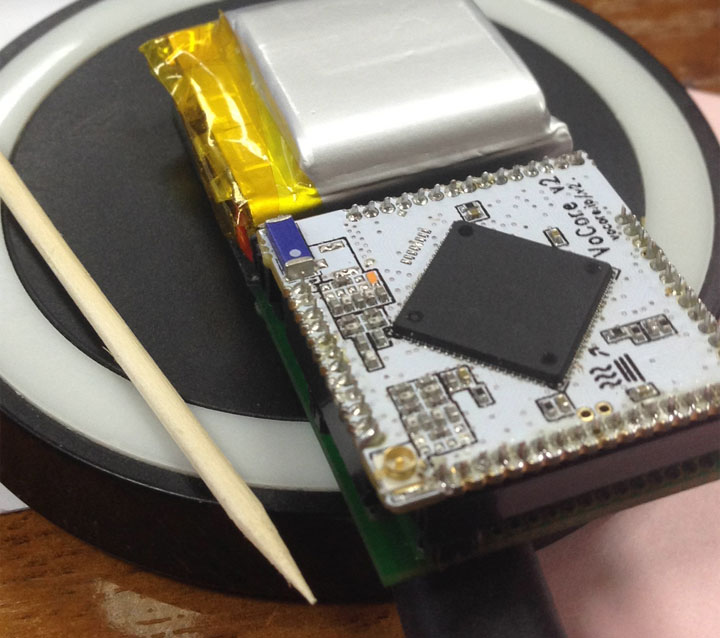
“A bad day at fishing is better than a good day at work.” There are a huge number of electronic bite alarms. My version is distinguished by the presence of WiFi with a WEB application, an accelerometer and wireless charging, protection class IP68. The device’s brain is the smallest Vocore2 Linux computer, MPU6050 accelerometer, Qi charging based on the BQ51050BRHLT . Sources can be downloaded here Github .
Specifications FishSensor:
- OpenWrt operating system 15.05.1 "Chaos Calmer";
- WiFi connection with mobile devices;
- communication range 30-50 m;
- bite control - sound (Android only), visual;
- remote setting of sensitivity, melody, volume;
- Internet is optional;
- 3 hours operation time (LiPo 500mAH battery)
- wireless Qi charging (up to a full 1.5 hours)
- protection class IP68;
- overall dimensions 60 x 30 x 11 mm;
- weight 22 g
The device is structurally a board on which the receiver antenna and Qi charging driver BQ51050BRHLT , accelerometer MPU6050 , Vocore2 connector, battery are located. Dust and water tightness due to the heat-shrinkable tube, from the ends it is filled in with silicone compound Rexant PK-68. Pull the fishing lead through a plastic tube with an inner diameter of 2 mm.
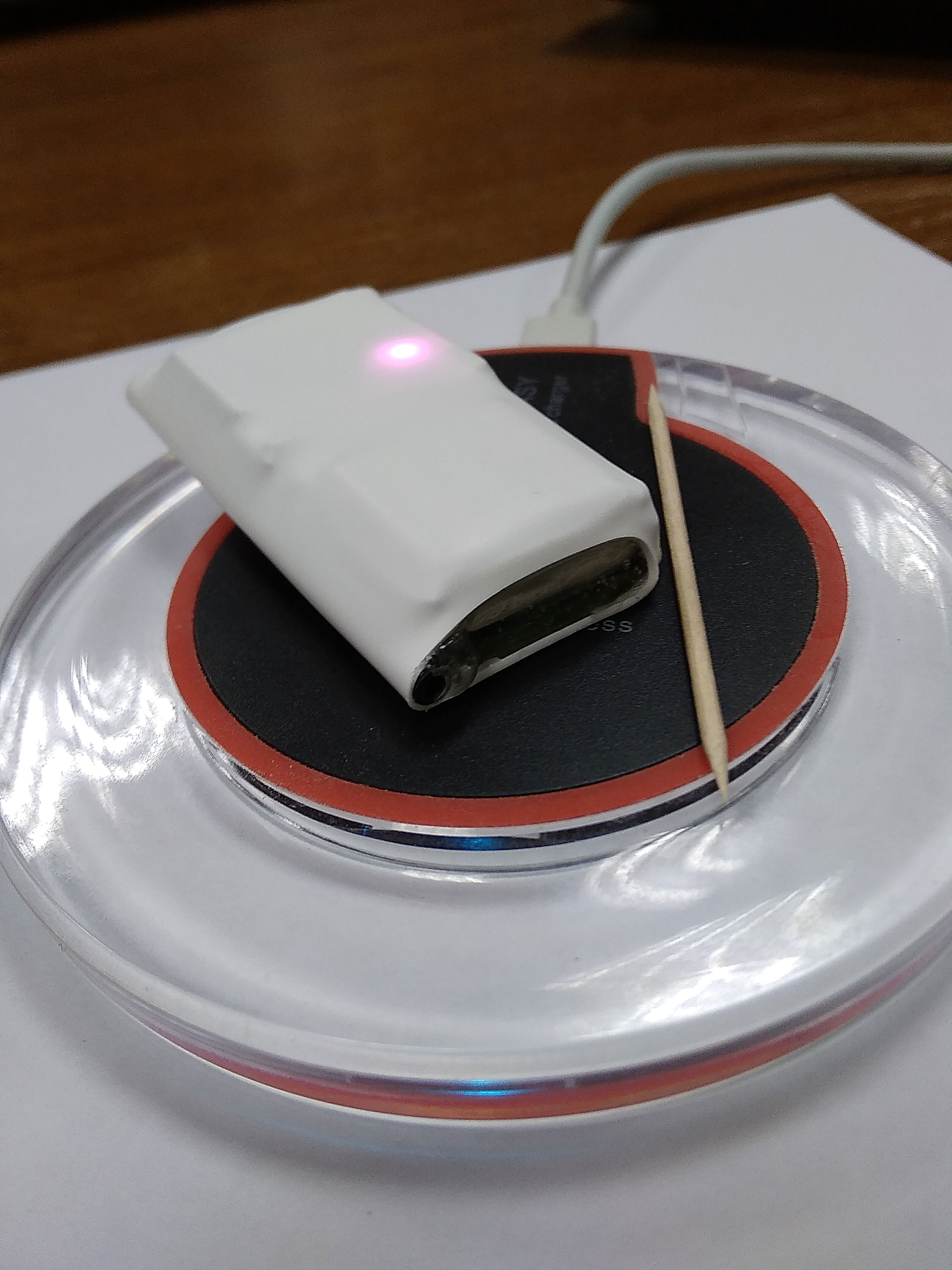
PCB manufacturing
The question was sharply whether it would be possible to make a Qi inductance coil of a receiver measuring 25 x 25 mm, 14 turns, track thickness 0.3 mm, a gap of 0.2 mm, and what the actual inductance of the coil would be. The calculated data were confirmed and gave an inductance of 4 μH.

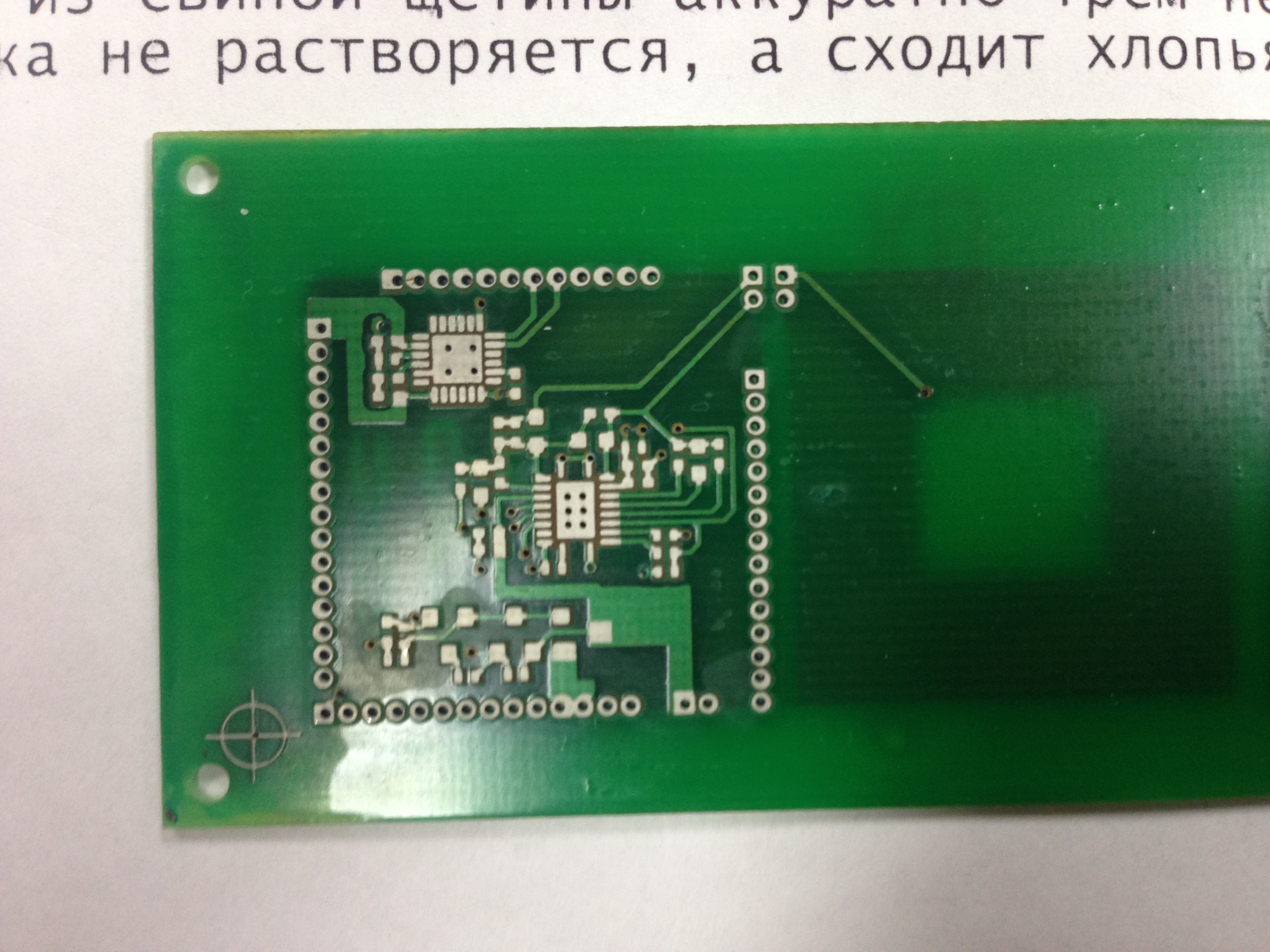
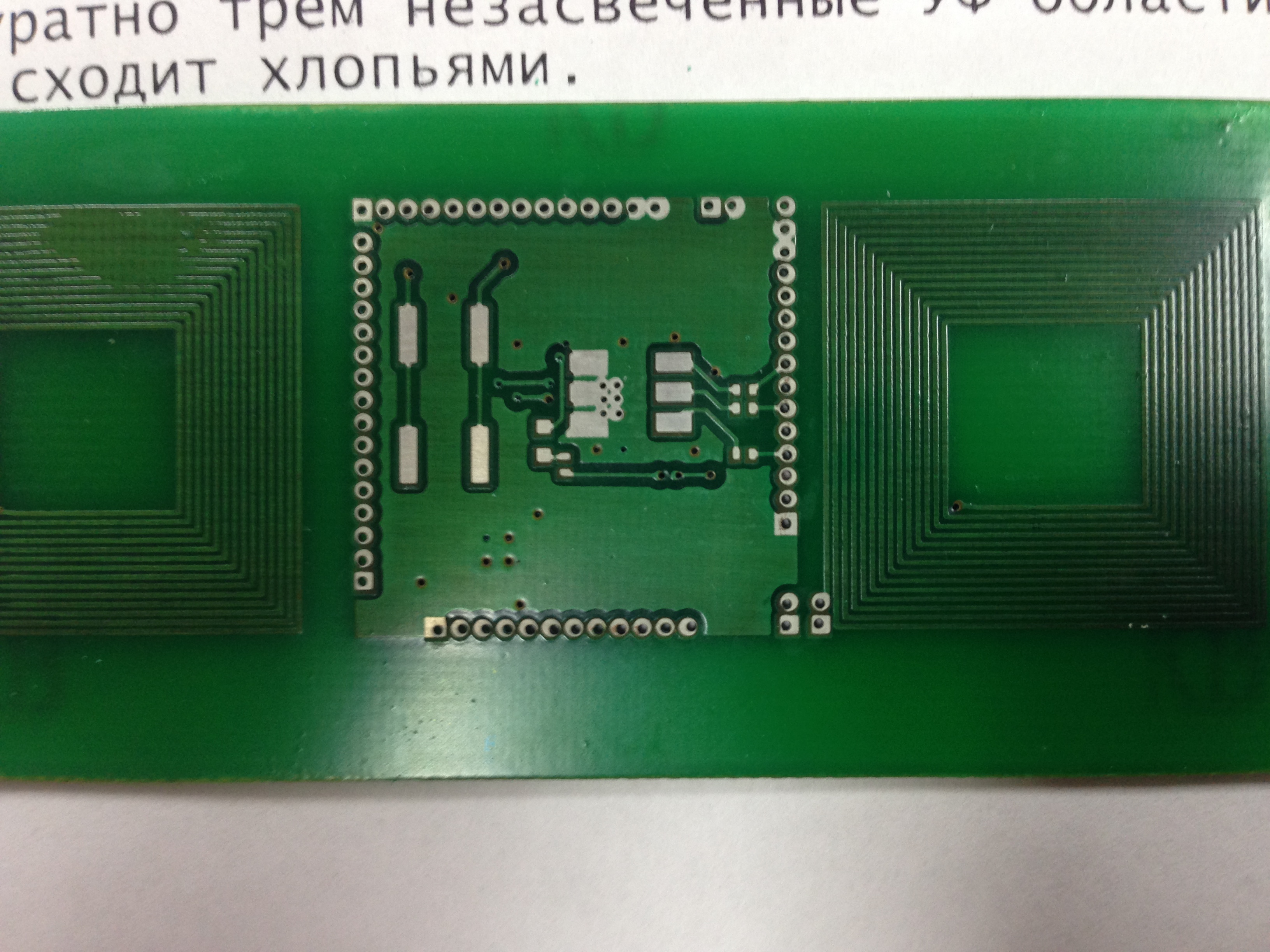
Soldering Elements
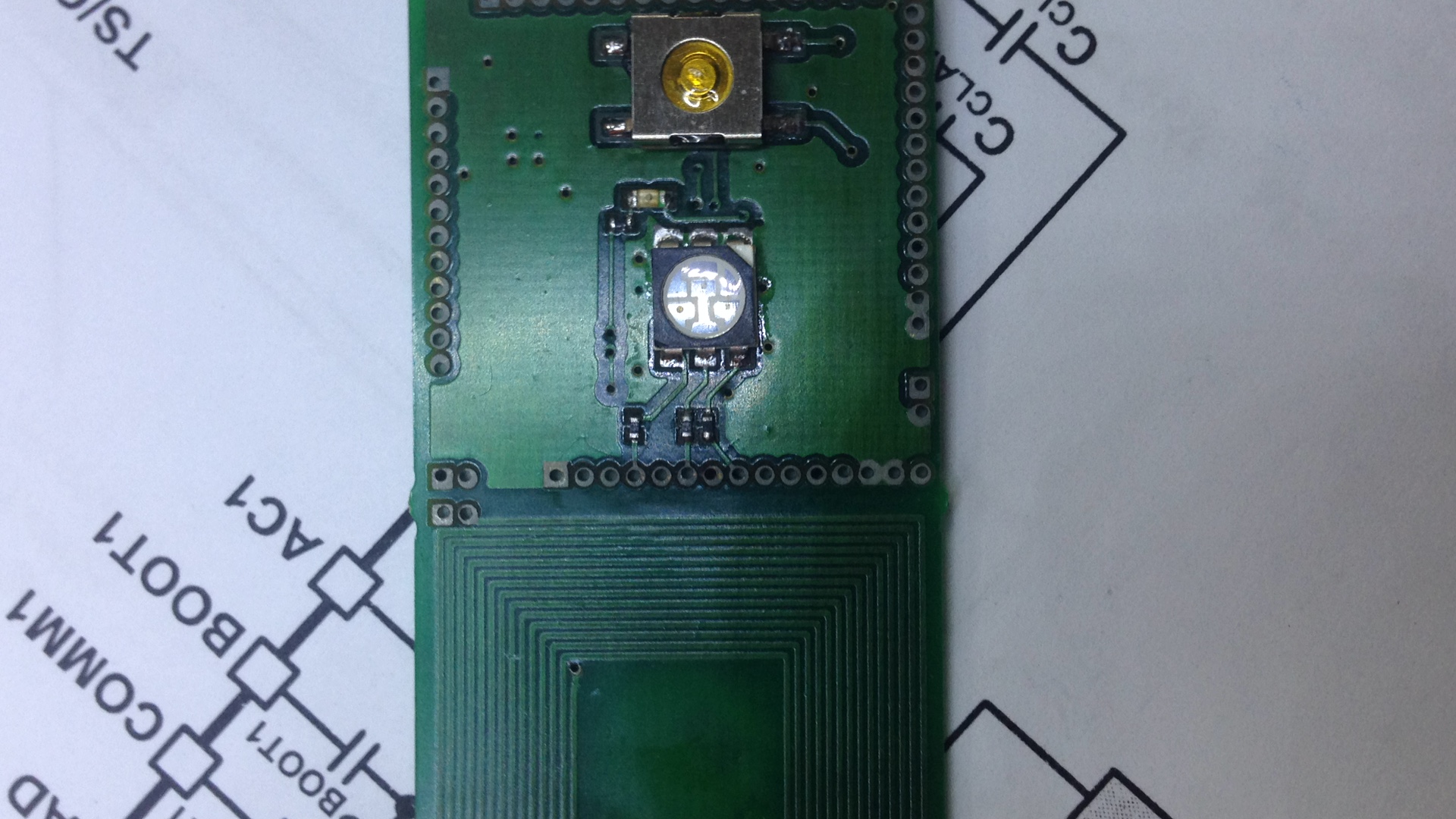
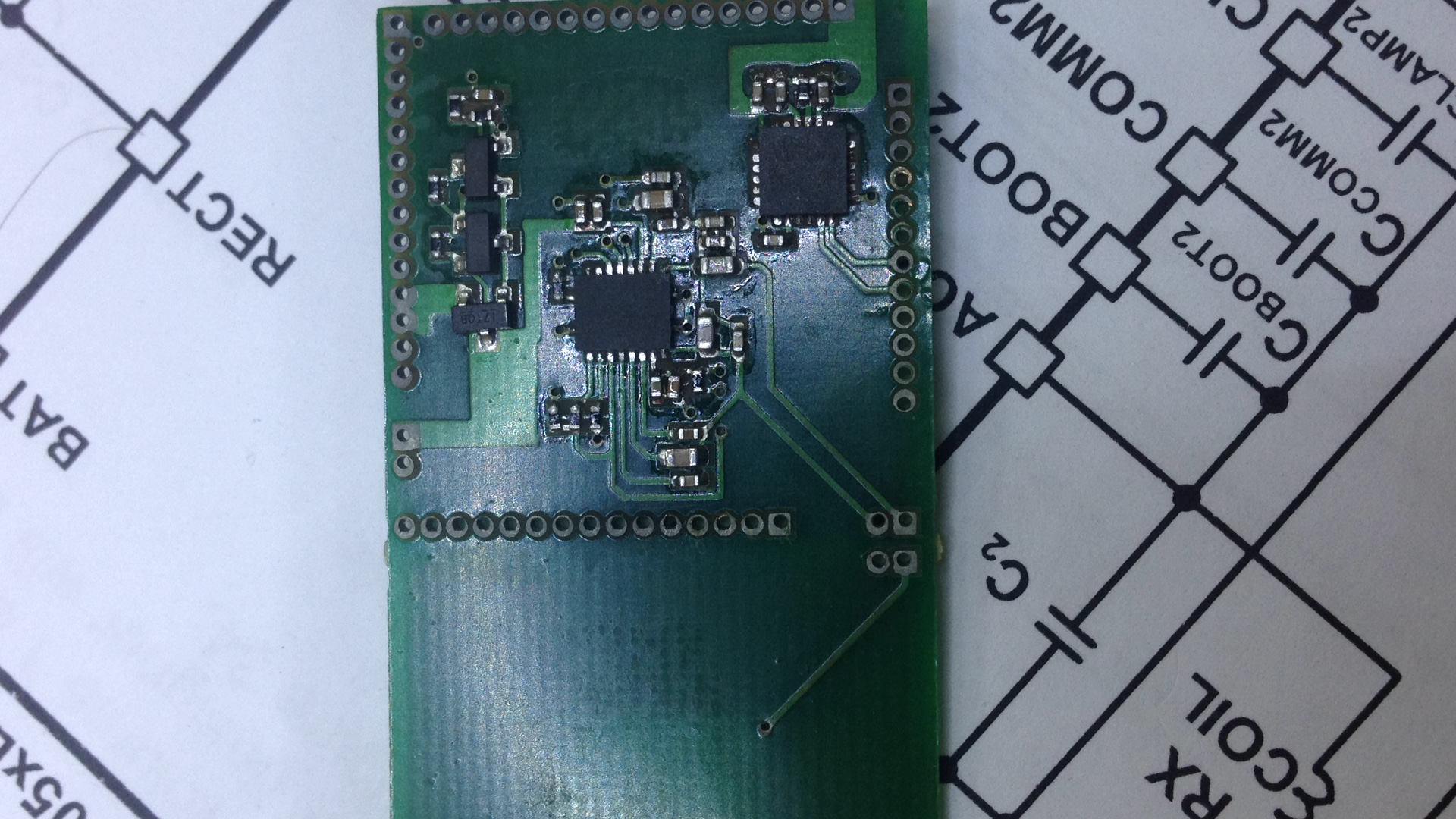
Qi charge setting
An interesting point was the tuning of the resonance of the oscillatory circuit. Recommendations and calculation formulas of datasheet on BQ51050BRHLT were confirmed. Inductance 4 µH, inductance with a ferrite shield 7 µH, capacitor in parallel 6.5 nF, capacitor in series with coil 422 nf. The quality factor of the circuit turned out to be very low 22 because of the large coil resistance of 1.7 Ohms (a quality factor of more than 500 was recommended by a datasheet). Nevertheless, everything worked perfectly, stable resonance at a distance of 10 mm from the transmitter coil.
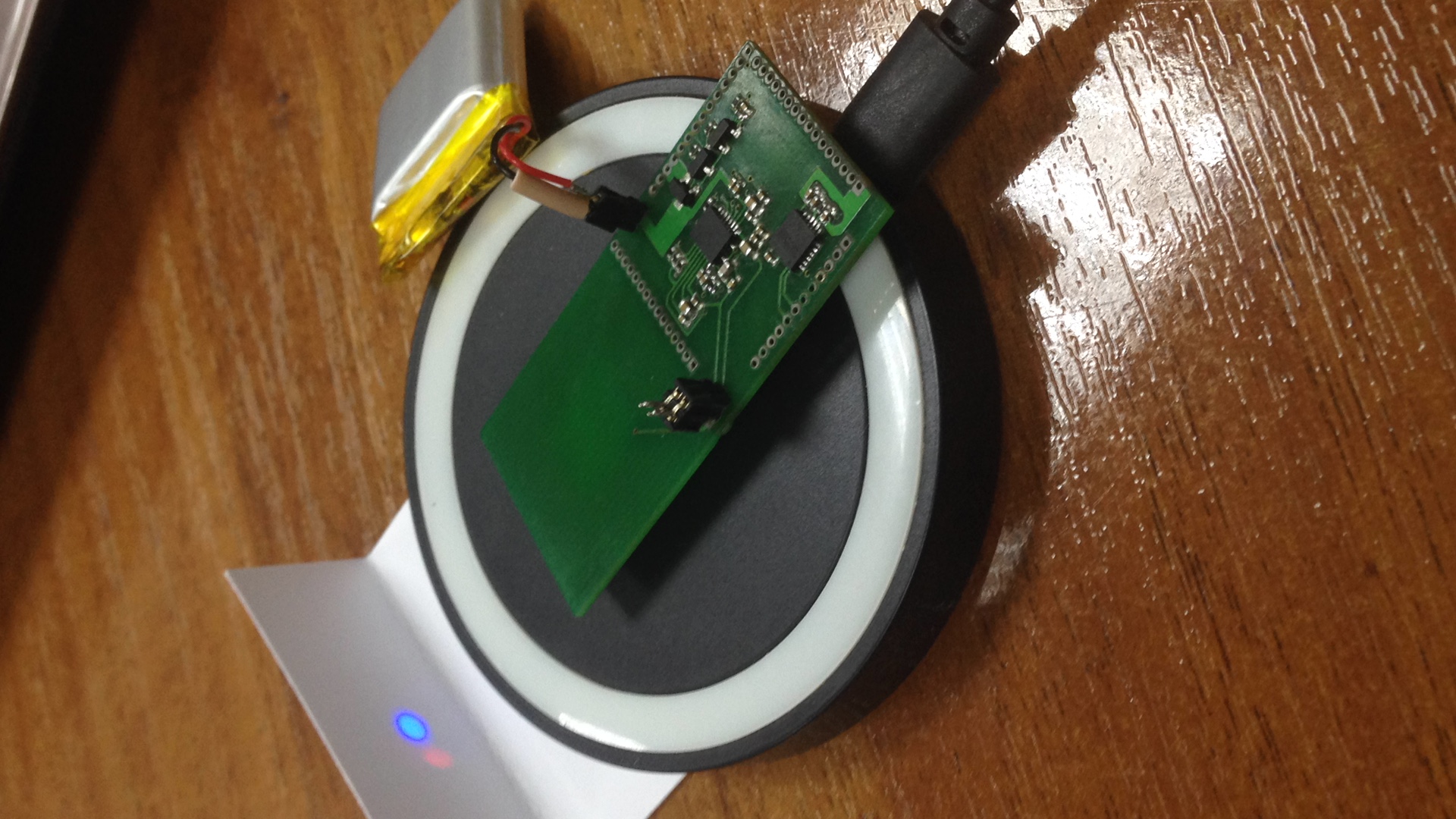
Constructive miscalculation - the charge indicator is on the antenna side, i.e. it is not visible when FishSensor lies on the transmitter of the charger. But the charging process is visible on the indicator of the Qi transmitter itself.
Accelerometer Setup
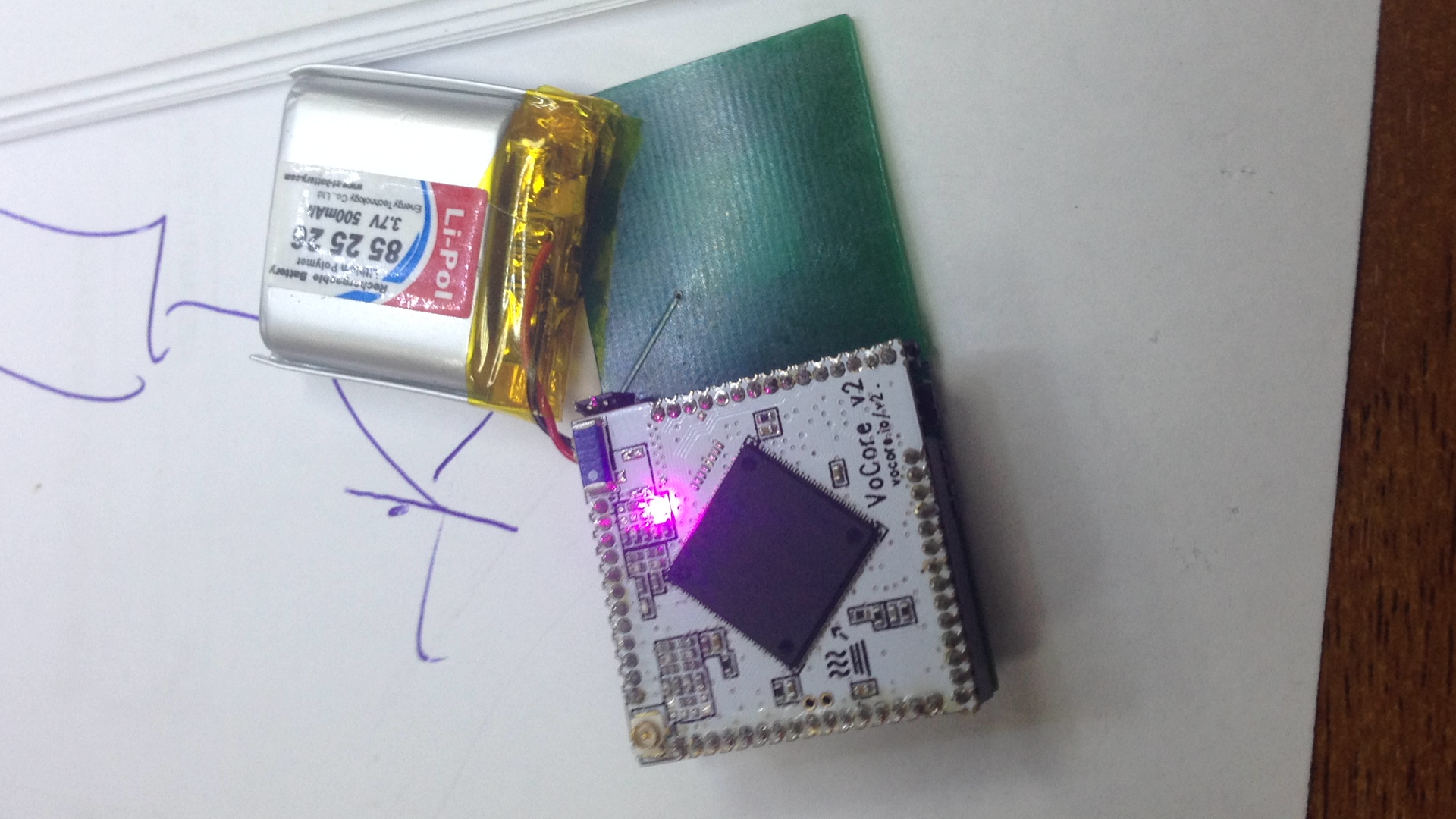
Software
Onboard Vocore2 from the factory installed OC OpenWrt 05/15/1 "Chaos Calmer". The device is accessible via WiFi via a browser thanks to the pre-installed Luci. We use the AP access point mode.
Installed the php5 package and all the necessary libraries to form the web interface. Installed a package for MPU6050 from leon0516 . At startup, I placed the autorun files of the MPU6050 driver and my script written on the 6050.sh bash . The MPU6050 driver generates a text file of accelerometer readings /tmp/mpu6050.txt. 6050.sh analyzes only changes in the Z axis in the file /tmp/mpu6050.txt and writes its log to /www/mess.log. The setup and display pages are written in php.
We connect the smartphone to FishSensor as an access point. Install on the desktop from the browser as a Web application. For Android, in the browser settings, we enable autoplay of sound files (in iOs, such a feint is prohibited by a security policy).
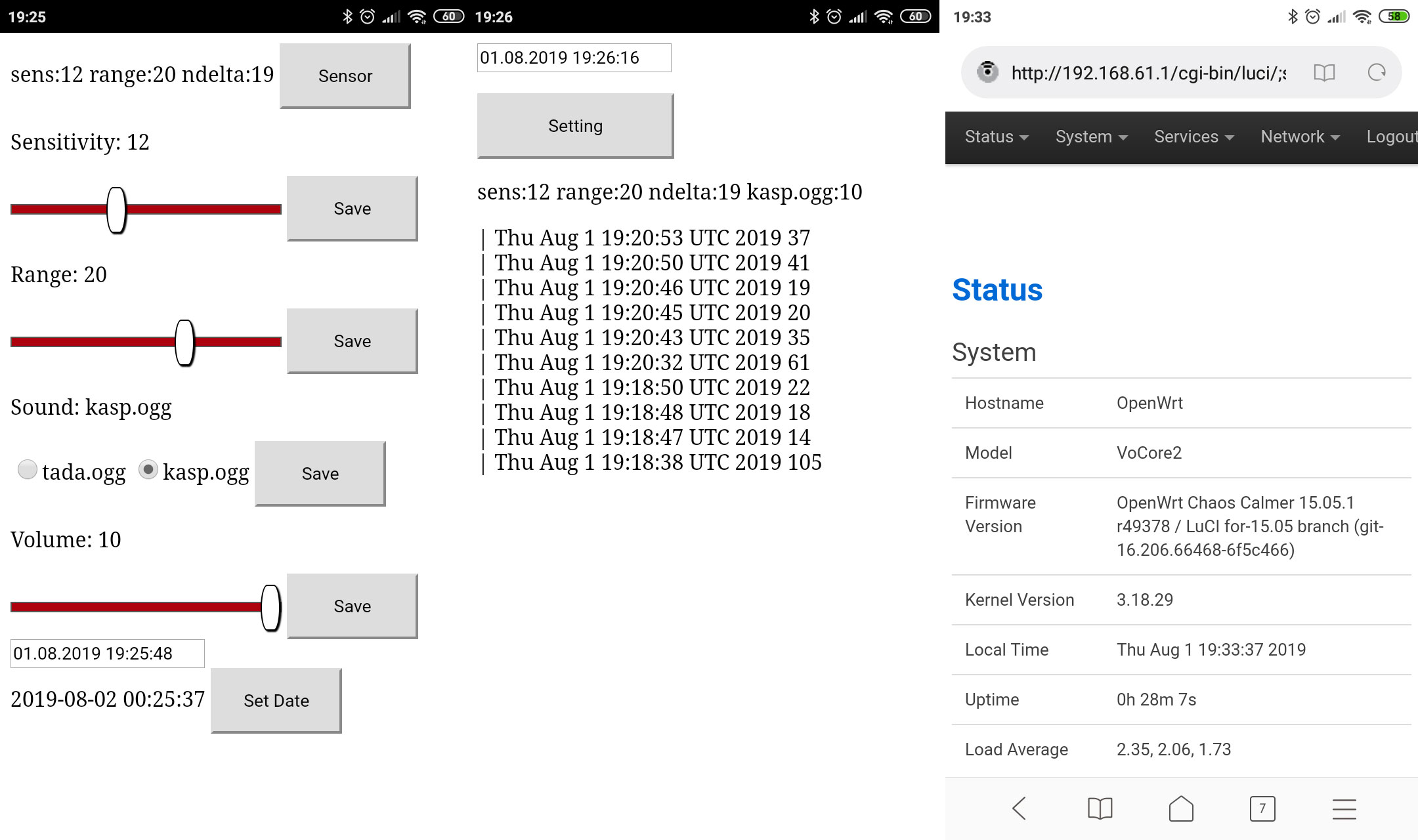
Faced the problem of caching data written to a text file by the OpenWrt operating system. The accelerometer readings are written to the file when the memory cache is full, sometimes delays reach up to 1 second. An existing patch to turn off file caching is broken. I thought that for my task this is not very relevant and decided to leave the problem until better times.
Demo
Full-scale tests have not yet been carried out, they are planned this month.
PS The development of the idea can be a cordless screwdriver with a Vocore installed in it to hook gear at the time of bite. In the maximum development, the Yandex.Fishing service.
All Articles